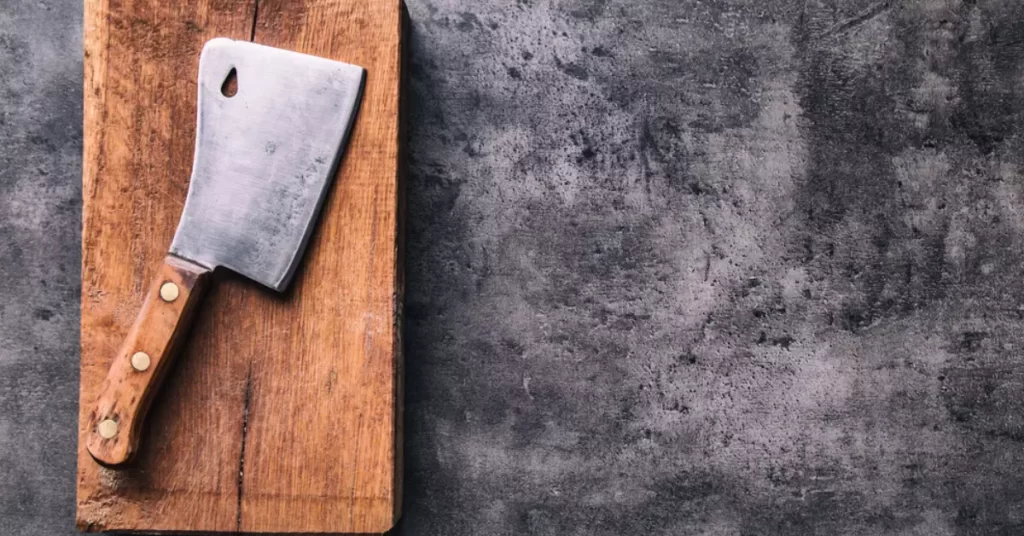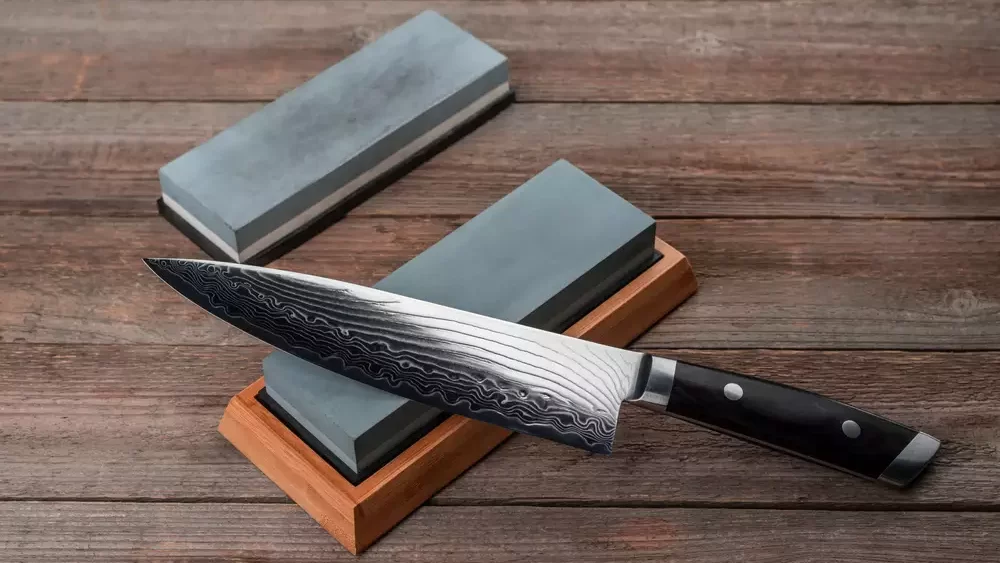You’re in the kitchen, ready to prepare a feast, when you face the ultimate dilemma: should you use a butcher knife or a chef knife?
While both knives are essential tools in any cook’s arsenal, they serve distinct purposes.
In this comprehensive guide, we’ll delve into the differences between butcher knives and chef knives, their unique features, and how to use them effectively. Let’s embark on this cutting-edge journey!
Understanding the Basics: Butcher Knife and Chef Knife
Butcher Knife: The Meat Master
A butcher knife is a specialized tool designed for cutting, trimming, and breaking down large pieces of meat.
It has a broad, hefty blade that can easily slice through tough muscle, connective tissue, and bones.
The blade’s curved edge allows for efficient rocking motion, while its sturdy handle provides excellent grip and control.
Chef Knife: The Kitchen Workhorse
The chef knife, also known as a cook’s knife, is the go-to tool for most kitchen tasks. It features a versatile, all-purpose blade that tapers to a sharp point.
The chef knife excels at chopping, slicing, dicing, and mincing a variety of ingredients, including fruits, vegetables, and meats.
Its balanced weight distribution and ergonomic handle make it comfortable to use for extended periods.

Key Differences Between Butcher Knife and Chef Knife
Blade Shape
A butcher knife has a broader, curved blade designed for cutting through meat and bones. Chef knives have a narrower, straighter blade suitable for all-purpose kitchen tasks.
Function
Butcher knives are best suited for processing large cuts of meat and breaking down carcasses. Chef knives are versatile tools that can handle a wide range of kitchen tasks.
Weight
Butcher knives are generally heavier than chef knives, providing more force for cutting through tough meats and bones.
Size
Butcher knives typically have longer blades, ranging from 8 to 14 inches, whereas chef knives have blades that range from 6 to 12 inches.
Advantages and Disadvantages of Butcher Knives
Advantages:
- Effortlessly cuts through large pieces of meat
- Ideal for trimming and breaking down carcasses
- Can easily handle tough, fibrous tissues and bones
- Durable and long-lasting
Disadvantages:
- Less versatile than chef knives
- Not suitable for precision tasks, such as slicing delicate produce
- Can be unwieldy due to size and weight

Advantages and Disadvantages of Chef Knives
Advantages:
- Highly versatile and suitable for a wide range of kitchen tasks
- Well-balanced and comfortable to use for extended periods
- Can handle various ingredients, from fruits and vegetables to meats
- Available in various sizes to accommodate different preferences
Disadvantages:
- Not designed for heavy-duty meat processing or cutting through bones
- May require frequent sharpening, depending on the material and usage
Selecting the Right Knife for Your Kitchen
When choosing between a butcher knife and a chef knife, consider your cooking habits and the types of dishes you typically prepare.
If you frequently work with large cuts of meat or break down whole animals, a butcher knife is an invaluable tool.
Conversely, if your cooking style focuses more on versatile, everyday tasks, a chef knife is the ideal choice.
Proper Care and Maintenance
To keep your knives in top-notch condition, follow these care and maintenance tips:
- Clean your knives immediately after use to prevent staining and corrosion
- Hand wash your knives with warm, soapy water and dry thoroughly
- Sharpen your knives regularly to maintain their cutting edge
- Store your knives in a knife block, on a magnetic strip, or in a protective sheath to prevent damage
Safety Precautions
- Always use a cutting board when using your knives to protect your countertops and the knife’s blade
- Keep your fingers clear of the blade while cutting
- Avoid using excessive force when cutting through tough ingredients
- Keep your knives sharp, as dull knives can slip and cause injury
Other Types of Knives to Consider
In addition to butcher knives and chef knives, other specialized knives can be helpful in the kitchen:
- Paring knife: Ideal for small, precision tasks like peeling, trimming, and slicing small fruits and vegetables
- Bread knife: Designed with a serrated edge for easily cutting through crusty bread and delicate pastries
- Fillet knife: A flexible, thin blade for filleting fish and removing skin from meat
Choosing the Right Knife for Your Cooking Style
Ultimately, the choice between a butcher knife and a chef knife depends on your personal cooking preferences and the tasks you most commonly perform in the kitchen.
While it’s beneficial to have both knives in your collection, focus on investing in a high-quality knife that best suits your needs and cooking style.
FAQs
Q: Can I use a chef knife to cut through bones?
A: Although a chef knife can handle some light boning tasks, it’s not designed to cut through bones. Using a chef knife for this purpose may damage the blade and increase the risk of injury.
Q: How often should I sharpen my knives?
A: The frequency of sharpening depends on your usage and the knife’s material. Generally, it’s a good practice to sharpen your knives every few months or when you notice a decrease in performance.
Q: What materials should I look for when purchasing a knife?
A: High-quality knives are typically made from materials like stainless steel, high-carbon stainless steel, or carbon steel.
Each material has its pros and cons, so choose based on factors such as durability, corrosion resistance, and ease of maintenance.
Final Thoughts
The butcher knife and chef knife each have their unique characteristics, strengths, and purposes. Understanding the differences between these two knives is essential for any home cook or professional chef.
The butcher knife, with its heavy, broad blade, is ideal for cutting through large pieces of meat, breaking down whole animals, and trimming fat with ease.
On the other hand, the versatile chef knife, with its narrower, tapered blade, is designed for a variety of tasks, from slicing, dicing, and chopping to mincing, making it a staple in any kitchen.
By selecting the appropriate knife for the task at hand, you can not only improve the efficiency of your cooking process but also the quality of your dishes.
In the end, investing in both types of knives ensures that you’re well-equipped to handle a wide range of culinary challenges.
